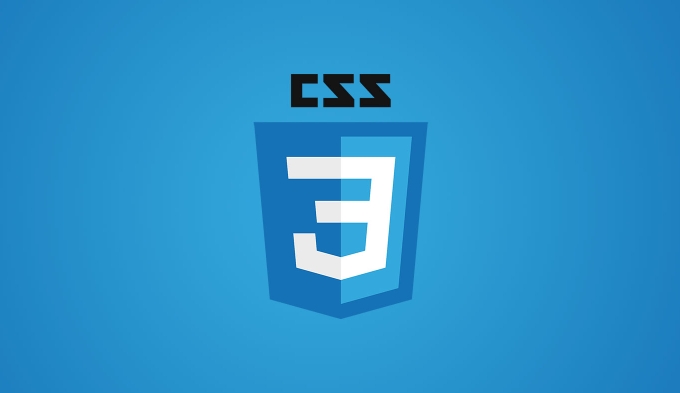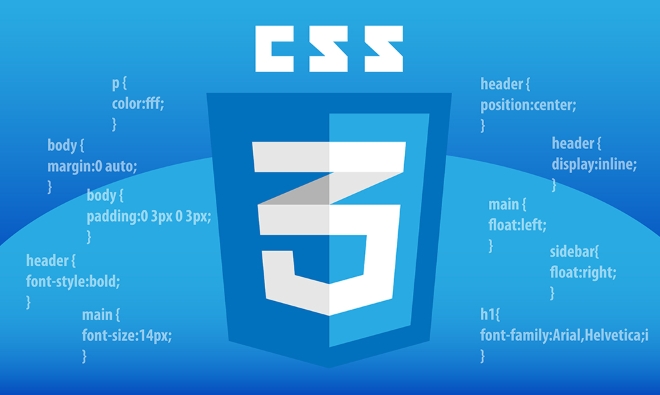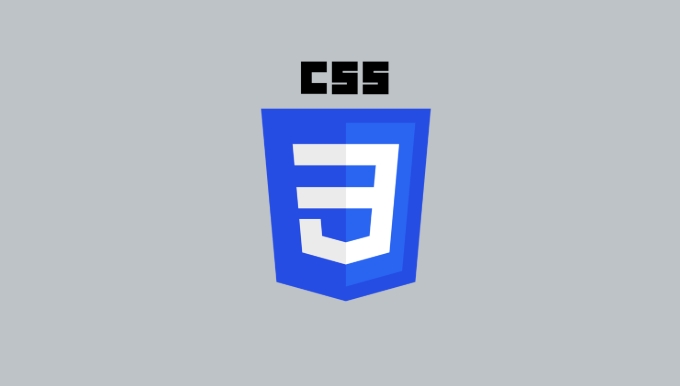Use max-width and width percentage to create scalable centered containers to ensure cross-device readability; 2. Set max-width: 100% and height: auto to keep pictures and media spills and maintain proportions; 3. Use em or rem units to optimize font and line spacing for paragraphs, quotations and code blocks to improve readability; 4. Embed responsive video with relative positioning containers with padding-bottom percentages to maintain a 16:9 aspect ratio; 5. Fine-tune fonts and margins on the small screen with media queries under mobile first; ultimately achieve frameless responsive blog design through flexible layout, fluid media, good typography and appropriate spacing, and perform well on all devices.

Creating a responsive blog post layout with CSS is all about structure, readability, and adaptability across devices. Here's how to build one that looks great on mobile, tablet, and desktop—without using a framework.

1. Use a Flexible Container with Max-Width
Start with a centered container that doesn't stretch too wide on large screens, keeping text lines readable. Use max-width so it scales down on smaller screens.
.blog-post {
width: 90%;
max-width: 800px;
margin: 0 auto;
padding: 20px;
line-height: 1.6;
font-size: 18px;
color: #333;
}-
max-width: 800pxprevents paragraphs from becoming too long (which hurts readability). -
width: 90%ensures it uses most of the screen on mobile. -
margin: 0 autocenters the content.
2. Style Headings and Media for Responsiveness
Headings should scale well, and images must never overflow the container.

.blog-post h1,
.blog-post h2,
.blog-post h3 {
margin-top: 1.5em;
margin-bottom: 0.8em;
line-height: 1.3;
}
.blog-post img {
max-width: 100%;
height: auto;
display: block;
margin: 20px 0;
border-radius: 8px;
}-
max-width: 100%on images ensures they scale down if the screen is smaller. -
height: automaintains aspect ratio. -
display: blockandmargin: 20px 0center images and add spacing.
3. Optimize Typography and Spacing
Good typography improves readability. Use relative units like em or rem for better scaling.
.blog-post p {
margin-bottom: 1.5em;
}
.blog-post blockquote {
background: #f9f9f9;
border-left: 5px solid #007cba;
padding: 15px 20px;
margin: 20px 0;
font-style: italic;
color: #555;
}
.blog-post code {
background: #eee;
padding: 2px 6px;
border-radius: 3px;
font-family: 'Courier New', monospace;
}4. Make Embedded Content Responsive (eg, Videos)
If you embed YouTube or Vimeo videos, wrap them in a container that maintains aspect ratio:

<div class="video-wrapper"> <iframe src="https://www.youtube.com/embed/..." frameborder="0" allowfullscreen></iframe> </div>
.video-wrapper {
position: relative;
width: 100%;
height: 0;
padding-bottom: 56.25%; /* 16:9 aspect ratio */
margin: 25px 0;
}
.video-wrapper iframe {
position: absolute;
top: 0;
left: 0;
width: 100%;
height: 100%;
border-radius: 8px;
}This keeps videos properly sized on all screens.
5. Add Mobile-First Media Queries (Optional Fine-Tuning)
Even with fluid design, you might want to tweak font sizes on small screens:
@media (max-width: 600px) {
.blog-post {
font-size: 16px;
padding: 15px;
}
.blog-post h1 {
font-size: 1.8rem;
}
.blog-post h2 {
font-size: 1.5rem;
}
}This ensures text isn't too large or too small on mobile.
Basically, a responsive blog layout comes down to:
- A flexible, centered container
- Fluid images and embedded content
- Readable typography with proper spacing
- Mobile-friendly defaults with optional tweaks
You don't need Bootstrap or Tailwind—just solid CSS fundamentals.
The above is the detailed content of How to create a responsive blog post layout with CSS?. For more information, please follow other related articles on the PHP Chinese website!

Hot AI Tools

Undress AI Tool
Undress images for free

Undresser.AI Undress
AI-powered app for creating realistic nude photos

AI Clothes Remover
Online AI tool for removing clothes from photos.

Clothoff.io
AI clothes remover

Video Face Swap
Swap faces in any video effortlessly with our completely free AI face swap tool!

Hot Article

Hot Tools

Notepad++7.3.1
Easy-to-use and free code editor

SublimeText3 Chinese version
Chinese version, very easy to use

Zend Studio 13.0.1
Powerful PHP integrated development environment

Dreamweaver CS6
Visual web development tools

SublimeText3 Mac version
God-level code editing software (SublimeText3)

Hot Topics
 What is Autoprefixer and how does it work?
Jul 02, 2025 am 01:15 AM
What is Autoprefixer and how does it work?
Jul 02, 2025 am 01:15 AM
Autoprefixer is a tool that automatically adds vendor prefixes to CSS attributes based on the target browser scope. 1. It solves the problem of manually maintaining prefixes with errors; 2. Work through the PostCSS plug-in form, parse CSS, analyze attributes that need to be prefixed, and generate code according to configuration; 3. The usage steps include installing plug-ins, setting browserslist, and enabling them in the build process; 4. Notes include not manually adding prefixes, keeping configuration updates, prefixes not all attributes, and it is recommended to use them with the preprocessor.
 CSS tutorial for creating a sticky header or footer
Jul 02, 2025 am 01:04 AM
CSS tutorial for creating a sticky header or footer
Jul 02, 2025 am 01:04 AM
TocreatestickyheadersandfooterswithCSS,useposition:stickyforheaderswithtopvalueandz-index,ensuringparentcontainersdon’trestrictit.1.Forstickyheaders:setposition:sticky,top:0,z-index,andbackgroundcolor.2.Forstickyfooters,betteruseposition:fixedwithbot
 CSS tutorial for creating loading spinners and animations
Jul 07, 2025 am 12:07 AM
CSS tutorial for creating loading spinners and animations
Jul 07, 2025 am 12:07 AM
There are three ways to create a CSS loading rotator: 1. Use the basic rotator of borders to achieve simple animation through HTML and CSS; 2. Use a custom rotator of multiple points to achieve the jump effect through different delay times; 3. Add a rotator in the button and switch classes through JavaScript to display the loading status. Each approach emphasizes the importance of design details such as color, size, accessibility and performance optimization to enhance the user experience.
 CSS tutorial focusing on mobile-first design
Jul 02, 2025 am 12:52 AM
CSS tutorial focusing on mobile-first design
Jul 02, 2025 am 12:52 AM
Mobile-firstCSSdesignrequiressettingtheviewportmetatag,usingrelativeunits,stylingfromsmallscreensup,optimizingtypographyandtouchtargets.First,addtocontrolscaling.Second,use%,em,orreminsteadofpixelsforflexiblelayouts.Third,writebasestylesformobile,the
 How to create an intrinsically responsive grid layout?
Jul 02, 2025 am 01:19 AM
How to create an intrinsically responsive grid layout?
Jul 02, 2025 am 01:19 AM
To create an intrinsic responsive grid layout, the core method is to use CSSGrid's repeat(auto-fit,minmax()) mode; 1. Set grid-template-columns:repeat(auto-fit,minmax(200px,1fr)) to let the browser automatically adjust the number of columns and limit the minimum and maximum widths of each column; 2. Use gap to control grid spacing; 3. The container should be set to relative units such as width:100%, and use box-sizing:border-box to avoid width calculation errors and center them with margin:auto; 4. Optionally set the row height and content alignment to improve visual consistency, such as row
 How to center an entire grid within the viewport?
Jul 02, 2025 am 12:53 AM
How to center an entire grid within the viewport?
Jul 02, 2025 am 12:53 AM
To make the entire grid layout centered in the viewport, it can be achieved by the following methods: 1. Use margin:0auto to achieve horizontal centering, and the container needs to be set to set the fixed width, which is suitable for fixed layout; 2. Use Flexbox to set the justify-content and align-items properties in the outer container, and combine min-height:100vh to achieve vertical and horizontal centering, which is suitable for full-screen display scenarios; 3. Use CSSGrid's place-items property to quickly center on the parent container, which is simple and has good support from modern browsers, and at the same time, it is necessary to ensure that the parent container has sufficient height. Each method has applicable scenarios and restrictions, just choose the appropriate solution according to actual needs.
 What is feature detection in CSS using @supports?
Jul 02, 2025 am 01:14 AM
What is feature detection in CSS using @supports?
Jul 02, 2025 am 01:14 AM
FeaturedetectioninCSSusing@supportschecksifabrowsersupportsaspecificfeaturebeforeapplyingrelatedstyles.1.ItusesconditionalCSSblocksbasedonproperty-valuepairs,suchas@supports(display:grid).2.Thismethodensuresfuturecompatibilityandavoidsrelianceonunrel
 Addressing CSS Browser Compatibility issues and prefixes
Jul 07, 2025 am 01:44 AM
Addressing CSS Browser Compatibility issues and prefixes
Jul 07, 2025 am 01:44 AM
To deal with CSS browser compatibility and prefix issues, you need to understand the differences in browser support and use vendor prefixes reasonably. 1. Understand common problems such as Flexbox and Grid support, position:sticky invalid, and animation performance is different; 2. Check CanIuse confirmation feature support status; 3. Correctly use -webkit-, -moz-, -ms-, -o- and other manufacturer prefixes; 4. It is recommended to use Autoprefixer to automatically add prefixes; 5. Install PostCSS and configure browserslist to specify the target browser; 6. Automatically handle compatibility during construction; 7. Modernizr detection features can be used for old projects; 8. No need to pursue consistency of all browsers,






